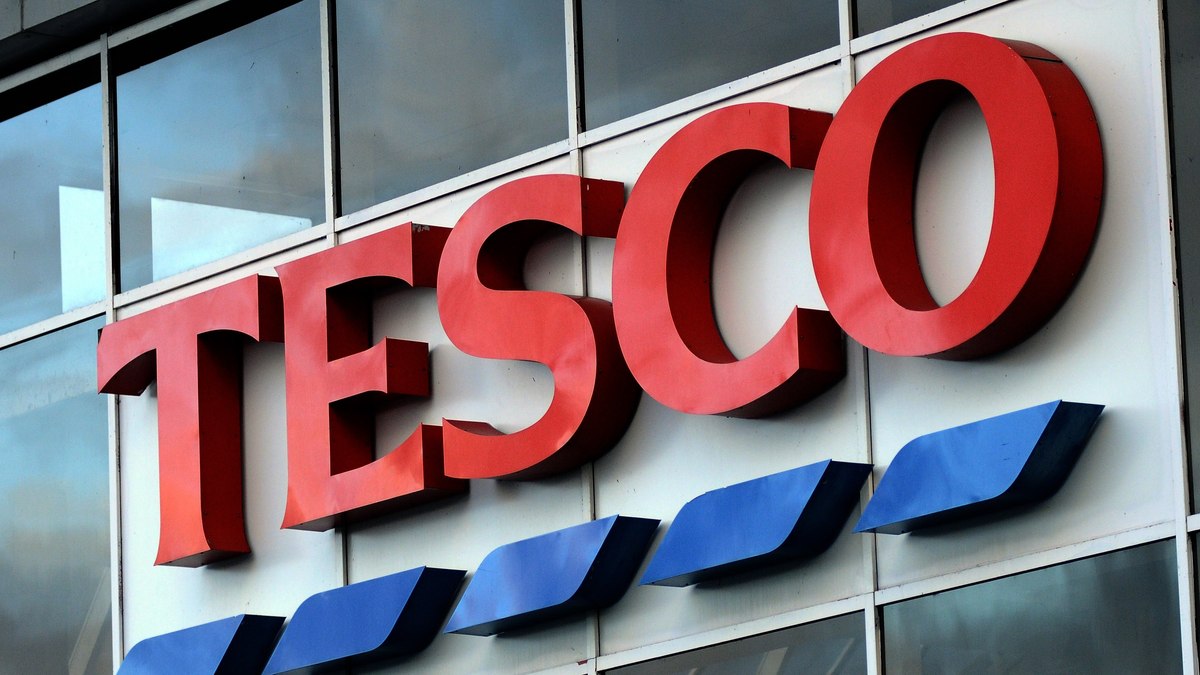With rumours that Asda are set to launch a ‘summer price war’, the need for the big supermarkets to attract and retain customers is more pressing than ever.
Although Tesco is not yet back to its pomp, it is in a stronger position to compete with its rivals.
In the past couple of years it has been rocked by a series of setbacks and saw its reputation suffer. However, under CEO Dave Lewis the retail giant has changed its strategy. It has emerged from this period of crisis and has recovered to a position where is ready to meet the challenges posed by its competitors. Here are five ways it has done it.
No news is good news
Tesco is the most improved brand in YouGov’s 2016 mid-year BrandIndex Buzz Score rankings.
It has bounced back from its struggles in the past year, and YouGov’s data shows that its Buzz Score (whether someone has heard something good or bad about the brand in the previous two weeks) has improved by 17 points compared to the same point in 2015.
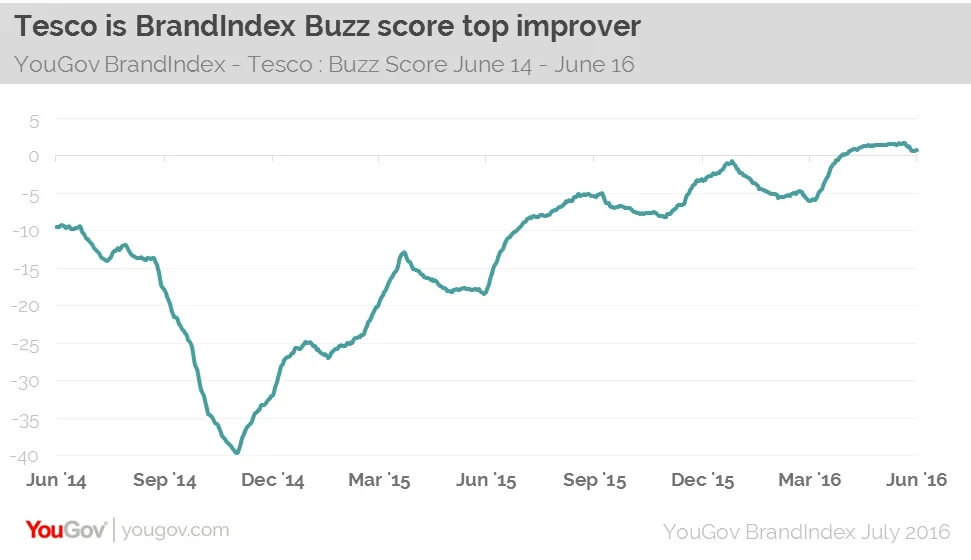
Tesco had a series of negative news stories prior to Dave Lewis’ arrival. Although the last 12 months could not be described as plain sailing, the brand has benefited from a sustained period out of the headlines.
Competitive on price
Although Aldi and Lidl have both continued to gain market share over the past 12 months, the established giants of the sector have tried to implement a successful counter strategy.
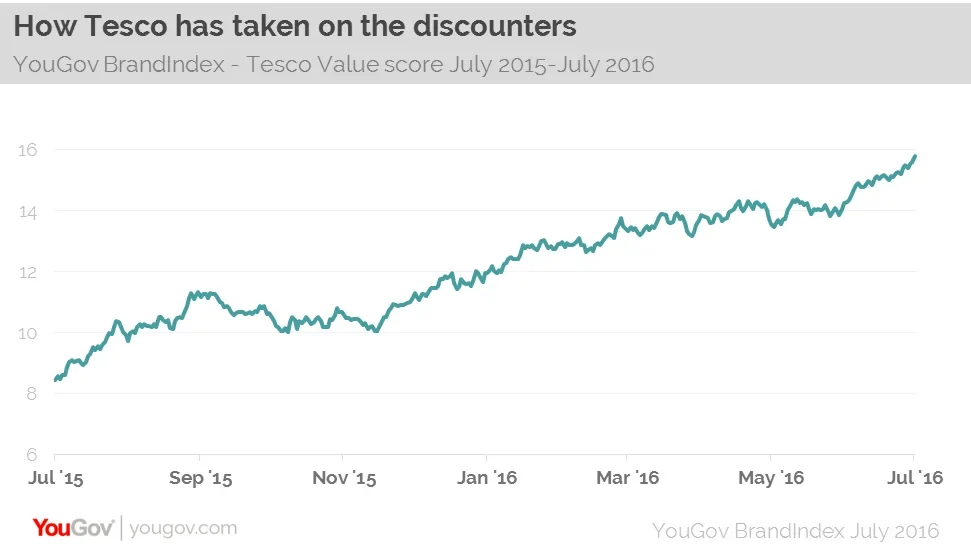
Tesco’s approach seems to be paying dividends. One feature of its response is the decision to implement a ‘brand match’ policy and it has also taken on the discounters by rebranding its own-label offering.
Furthermore, Tesco’s Value score (whether someone believes the brand offers value for money) has risen consistently since July 2015. At that time Tesco’s Value score was +8. Fast forward to June 2016 and the score is +15.
Quality is paramount
Of course, Tesco cannot compete with the discounters only on price. It also needs to offer increased quality and again on this front, it’s a positive picture for Tesco.
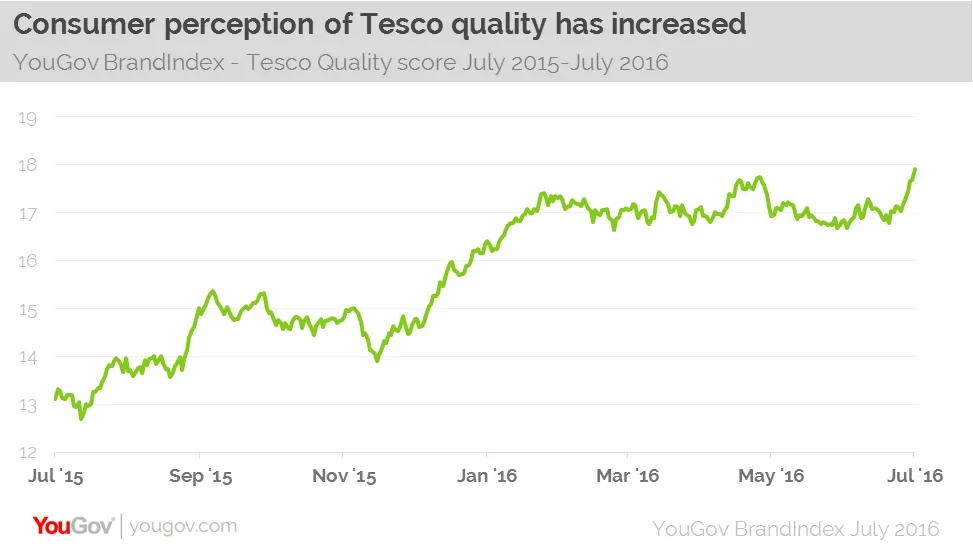
The brand’s Quality score has risen from +13 to +18 since last summer as it attempts to remind customers why they loved Tesco so much in the first place. Quality is a key part of this.
Customer service is key
Company bosses concluded that shoppers were not deserting the brand completely, but occasionally doing smaller shops at other retail outlets. As a result, Tesco has placed greater emphasis on the in-store experience of its customers so that they spent more time in store. More effort has been put into customer service, with a greater presence of staff on the shop floor.
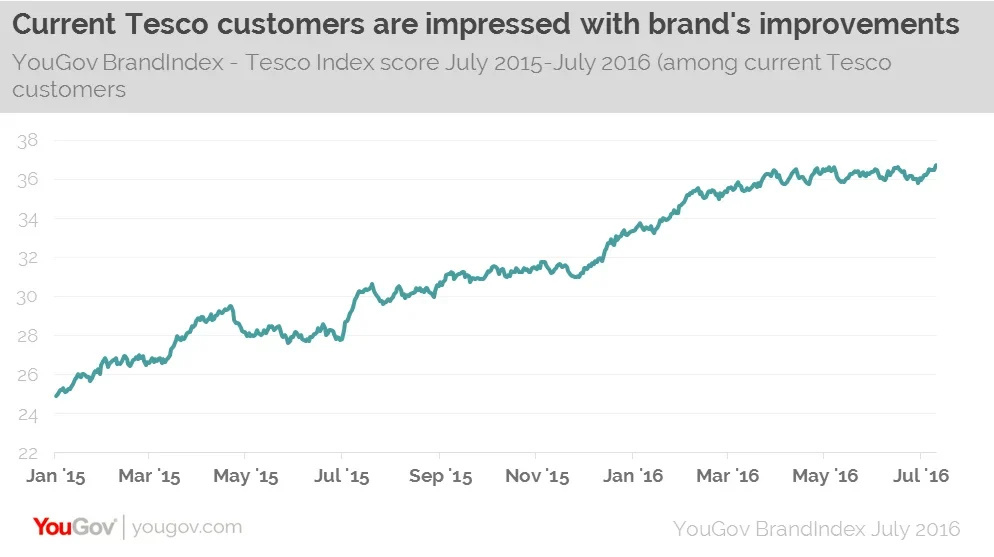
Our data indicates the improvements that have been noted among current Tesco customers. Among those that identify as current Tesco shoppers, the brand’s Index Score (a combination of Impression, Quality, Value, Reputation, Satisfaction and Recommend scores) has risen from +24 to +36 since January last year.
Streamlining the overall business
That is not to say Tesco has been restored to its halcyon days on the early 2000s. It moved to close smaller Tesco Extra stores that were trading below expectation.
It has also sold many underperforming businesses in the past 12 months, such as restaurant chain Giraffe and Dobbies garden centre stores. This was done to ensure Tesco could best serve its customers in its core offering.
While the business is stabilising, and competition is fierce, it has placed greater focus on what elevated Tesco to its dominant market position in the first place.
Image PA
